Arriving
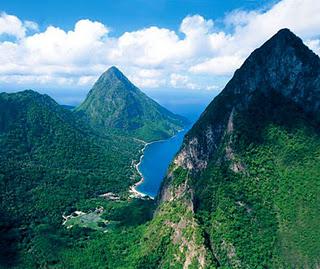
The famous Pitons
I gazed at the gibbous moon gleaming low in the afternoon sky. I was ona south-flying plane looking east over the cobalt Caribbean. From 38,000 feetthe sea seems as static as a painting; the rippled surface, flecked by brightwhite wave crests, appears fixed like stone. The sporadic clouds cast apatchwork of dark size-less shadows onto the water. The daytime sky looksdifferent from high altitude, the blue purer, the dome of the sky a darker azurethan can ever be seen from the ground. When I travel by plane I always feellike my fellow passengers and I are nowhere, lost for a time between origin anddestination. We’re not where we started or where we’re going. This perceptionis powerful during night flights, especially over water, where only blacknesscan be viewed from the windows. But it’s true during the day as well; flyinghigh above the world, detached from the slow fade of the terrestrial reality farbelow. And it’s emphasized when the place left behind and the place traveled toare drastically different – as they were today.Our 757 took off from Atlanta, the world’s busiest airport, on a sub-freezingJanuary morning. We would soon be landing at a notably quiet runway, and into theendless tropical summer. My girlfriend and I were taking a vacation to the tinyisland nation of St. Lucia. This would be my first time in the Caribbean, thefirst time staying at an “all-inclusive” resort, and I was eager for theexperience. We had flown over Puerto Rico a half hour earlier and were already settledinto our gradual descent. French Martinique was green and beautiful below. ThenSt. Lucia appeared. Our flight path was taking us right over the island –northwest to southeast. We were lower now and I had a good view of the island, somodest in size that I could almost take it all in: the semi-dense development inthe northwest; a three-masted sailboat in the cove of Pigeon Island; a cruiseship nestled into Castries’ (the capital) small harbor; bright blue water andlight sand along the Caribbean coast; the green, lush, empty, rugged interior;a fleeting glimpse of the strange, picturesque, and famous pyramids of the Pitonsin the southeast; and finally our figure-eight descent into HewanorraInternational Airport at the south end of the island.
St. Lucia
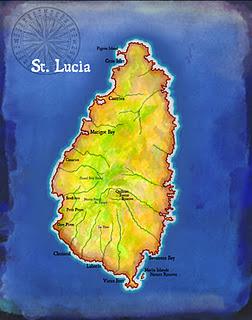
The aboriginal population was decimated after contact with Europeans,and African slaves were imported in large numbers to work the island’s numerousplantations. Today the population is almost entirely black. English is theofficial language, but a French-Creole is the local vernacular. Fromobservation, the locals speak English to tourists and Creole amongst themselves(more on this later).
The island is also obviously poor. The per capita income is less than$6,000 a year, a meager sum. Contrast that to Barbados a hundred miles to thesoutheast, a nation of similar size but with personal income four times larger.The dearth of wealth was obvious from the bland, functional airport and thelanguishing buildings on the way to our resort, a drive which fortunately tookall of about three minutes because our resort, Coconut Bay Beach Resort(hereafter known as Coconuts), has the terrific convenience of being literallywithin sight of the main runway.
All-Inclusive
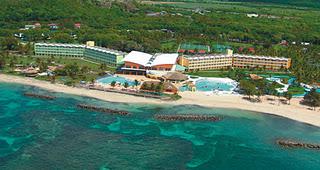
Coconuts from above
Coconuts is situated on a large plot along the Atlantic Ocean, maybe100 acres in total, at the southwest corner of the island. According to ourinbound flight attendants, it was a former Club Med and also the preferredlayover hotel for pilots and flight crew (no doubt because of its proximity tothe airport). It’s both the only resort on the Atlantic – windward – side ofthe island, and the only resort situated in the far south. This means the surfis constantly choppy and the water has a distinctly teal color, no clearturquoise to be seen. We were greeted with a glass of champagne, settled in ourroom, and took a walk around. The resort is comprised of two wings, one forfamilies and one for couples (which is where we were staying), all with oceanview rooms. It includes half a dozen bars spread out over the complex [2], amain dining area, three specialty restaurants, a night club, main stage fornightly entertainment [3], at four sprawling pools, a smallwaterpark, tennis courts, and a tiny paintball battlefield. There was also areception building and seaside gazebo (where a wedding occurred during ourstay). Of course you can’t overlook the mile or so of breezy beachfront andfields of palm trees. In general, the buildings are older but they were wellmaintained and the rooms and common areas were clean, so I was happy. The largehigh ceiling-ed lobby was the first floor of the main central building, and it was open on the entrance and pool/ocean side to the elements. No need forwalls and windows in a perfect climate. There was an “adults only” section witha private pool, bar, and beach, which my girlfriend and I planned to take full advantageof. Is this similar to countless other Caribbean resorts? Perhaps, but itnicely met my expectations.I was skeptical about the meaning of “all-inclusive.” I expected somethings would be free as part of our already-paid-for package, but thoughtsurely that some alcohol, restaurants, or activities would cost extra. I waswrong. Everything at the resort was indeed all included. So we ate Caribbeanfood at Calabash and Asian cuisine at Silk, indulged ourselves frequently atthe pool-side grill, enjoyed made-to-order (and exquisitely prepared) omeletsand breakfast foods of great variety, including chocolate-chip croissants. Wedrank many many cold alcohol-infused concoctions like the Island Vibration,Mango Tango, Lucian Love, and Tropical Rainbow; and sometimes I just had a cupof the locally brewed Piton lager. We were given complimentary massages – actuallymy first ever professional massage – and a romantic dinner under the stars. Wefloated along the lazy river and slipped down twisting water slides. And oftenwe sat by the pool, viewed the ocean, and relaxed. The guests were likeourselves, vacationing Americans, Canadians, and English; there seemed tobe an especially large cohort from Toronto.
A couple words about the staff. They were helpful and friendly. Manyactually seemed to enjoy their work. Surely certain employees are chosen tointeract with guests as bartenders, wait staff, and other “visible” positions becauseof their personalities, but even Trevor the exterminator came and spoke withus, gladly sharing pictures of his well-tended garden and two small children.Customer service is the name of the game, so perhaps I shouldn’t draw broaderconclusions based on how the staff treated the guests, but I will emphasizethat the demeanor and attitudes we encountered enhanced the enjoyment of ourstay.
Tropical Colors
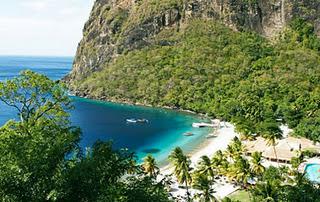
The tropical colors at Jalousie
Tropical islands lend themselves to the visual, in places soarrestingly beautiful that you stare in disbelieving amazement. For me this visualquality is largely captured in the colors, colors different, more vividperhaps, than found in colder climates. There is the super-saturated ceruleansky, the many shades of sea blue: teal and shining turquoise near shore, bandsof sapphire and indigo farther out, and the deep Mediterranean- (or should itbe Caribbean-?) blue far off shore. St. Lucia is green, but not the emerald of say,Ireland or Britain, but baked with yellows by the strong sun, and contrastedwith the dark gray volcanic rock. The foliage is summer-green but the grassyground is tinged with a dryer-brown. The palm fronds are a familiar lime, butaccented with an orange-golden hue in sunlight. There are electric pink andfuchsia flowers, ripe yellow bananas, variegated mangoes of green-honey-rose,the canary fruit of the cocoa tree, and the cream-violet cocoa seeds. Even thewhite of a freshly opened coconut seems cleaner, brighter in the tropicallight.Lying supine on a beachside lounge chair staring at the cloudless skythrough a canopy a palm trees, or walking the beach with a scene of waves,sand, sky, and the blowing palm fronds was hypnotizing, always affecting; sightsthat remind you of just how spectacular sight really is.
Night is different too. I’m used to the nighttime urban glow thatobscures all but the brightest celestial objects. Not here. Even with theresort’s lights glaring the sky was alive. For instance, the moon, waxing tonearly full by our last night, perched high in the northern sky as we enjoyed ourromantic seaside dinner. It cast an intense and unfamiliar cone ofsilvery-purple light on the Atlantic swells below. The stars appeared to twinklein the dewy air. I spotted the pale beige spec of Jupiter clearer than I hadever seen it before (un-miss-able actually). Late one night I sat alone on ourroom’s balcony overlooking the ocean, slowly smoking a Cuban cigar [4], ponderingthe quiet sky. I searched for words to describe the sight, and recalled Joyceas I looked up at: the heaventree of stars hung with humid nightblue fruit [5].
St. Lucians
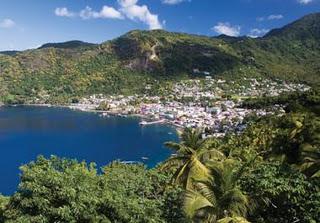
Soufriere town and harbor
We ventured out of the resort, taking a tour of the southwestern sideof the island. We wanted to see more of St. Lucia than the beach and airport,we wanted to see the real life of the island. Our driver, Nev, drove us swiftlyalong narrow serpentine roads and through tiny hamlets, provided a runningcommentary on the sites we passed, St. Lucian history, current events, andimpressions of past and future. I now know that St. Lucia is a major supplierof bananas to the United Kingdom, that St. Lucia supplies the cocoa beans forHershey’s chocolate (a favorite of this blogger), and that a new chocolatefactory is being constructed on the island. I learned that local building codesand the regulations and rules governing personal property are eithernon-existent or lackadaisically enforced. I discovered that St. Lucia is hometo a dormant volcano – not extinct – and that a collapsed caldera shapes thegeography of much of the western side of the island. I learned that themagnificent Pitons – Gros Piton and Petit Piton, the spectacular mountainpyramids that rise over two thousand feet from the Caribbean, world famous anda UNESCO World Heritage Site, were in fact formed by volcanic action pushing upthe landmass (volcanic plugs being the technical term). We heard that St. Luciais a major trafficking point for marijuana between the nearby St. Vincent andthe Grenadines [6]and Martinique.I saw traditional methods of how coconuts are processed (see below),how cocoa beans go from plant to factory, how sugar is extracted from sugarcane. I smelled the rotten egg odor of sulfur so thick near the “dormant”volcano it made you feel sick, and saw streams run black from high sulphurconcentrations. I saw passion fruit, sweet saw, calabash, and sour lemons forthe first time [7].We ate Creole food, and we ate it with delight. My suspicion was confirmed,Hewanorra International Airport developed from a World War II airstrip built byAmericans [8].We heard that sadly, one of the island’s two hospitals had recently burneddown, that due to island’s southern location it is rarely affected byhurricanes, and saw that all school children wear uniforms.
We learned that a stay at the five-star resort Jalousie, nestled between the twoPitons and situated on a heavenly white-sand beach, costs $2,000 per night perroom [9].We were told several times that a recent season of the American television show The Bachelorwas filmed in the exclusive Jade Mountain resort, balanced on a spit of rockabove the town of Soufriere, and where each room has its own pool. We heardrumors that that same resort is one of Oprah’s favorite vacation spots.
We bought trinkets and crafts from local merchants. We bought souvenirsand we bought food. We bought from merchants at the resort, we bought in stores, and we bought from peddlers on the street. Webought because we wanted to, we bought because we thought we should support thelocals, and we bought out of pity. We bought at face value, which is uncommonbecause you’re supposed to bargain, but I forgot this bit of expectedetiquette, and I’m not much for dickering with local sellers anyway. Not whenthey’re likely pretty poor, and especially when it comes to a paltry fewdollars.
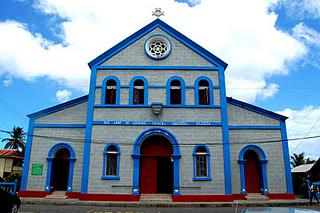
Church in Choiseul
Observing the western portion of the island confirmed that St. Lucia isindeed a poor country. Buildings were slipshod and in a slow state ofdeterioration. Shops appeared drab and small, stock thinly covered the shelves.The people weren’t hungry or homeless, but they certainly looked poor. Indeed,as I was told more than once by peddlers, they are poor. However, the islanddid hum with life. We saw – and smelled – a busy fish market, fish brought straightfrom the nearby fishing boats, in the town of Choiseul. We viewed gorgeousisland-themed murals in an old church, the paintings surrounding traditionalStations-of-the-Cross plaques, thematically complimenting the religious themes.In all our dealings, within the resort and without, the people were decent.As I noted earlier, maybe this is unsurprising because tourism is the largestcomponent of the economy and being nice to visitors is good for business. But,it’s hard to fake courtesy forever, and St. Lucians are either gifted actors orgenerally more friendly than your average Westerner. All the locals spokeEnglish with my girlfriend and I (and all other foreigners from what I heard),but they all spoke Creole amongst themselves. No doubt this is intentional, away for St. Lucians to keep their privacy and separateness from invasive tourists.I would love to know what they said to each other. Probably little to do withus, we were just one pair of foreign faces in thousands that they see eachyear, but I’m as curious and paranoid as anyone else who hears a foreignlanguage being spoken – intentionally – around them. That aside, local behaviorwas very good.
An illustrative example. We went zip-lining above the town ofSoufriere. My girlfriend and I were joined by four English sisters and led bythree twenty-something St. Lucian guides. The youngest of the sisters, Amy, hadDown’s Syndrome. My brother has Down’s Syndrome, so I’m acutely alert to how Down’speople are treated by others. In my experience, such treatment is a strong signof character. Those that treat the mentally handicapped with respect, patience,and dignity demonstrate compassion, patience, and generosity. Those that don’treveal significant character flaws. And in my years of observation, a sizableproportion of the population falls into the latter camp. Our three guidesdemonstrated fine character. They were helpful, supportive, and careful. Theyensured that Amy was safe, they encouraged her when she doubted herself (andshe did a few times), and they made sure that she was having fun (she was).Again, a cynical view would hold that they were working, and working for tips,and they were being observed by her sisters. However, their attitudes wereeither genuine, or they were superior performers. It’s possible to beprofessional without really caring, and many times that perfectly acceptable. Butour guides seemed professional and caring.
Still, being an American, I had to ask the racial question. Almost allof the tourists are white North Americans and Europeans. Almost all St. Luciansare black. In the United States, race always seems to be a subtext in socialrelations between African Americans and whites (and other races). The Americanexperience with slavery, segregation, and discrimination unfortunatelyseems to color the perception of whites and blacks. Do St. Lucian blacks, mostly poor,resent the presence of “rich” white foreigners? Or do they appreciate thetourist dollar? Or a bit of both? Alternatively, does having theirindependence, and control of their own nation provide a perspective whollydifferent than that of American blacks? I couldn’t ask these questionsdirectly. I could only try and gather answers by delicate probing, listening,and observation. What did I discover? Nothing definitive. St. Lucians seemfriendly. But they’re also like anyone else, some like our bar tenders Maclee,Akon, and Sean, seemed more social and outgoing than others. Some seemed tolike their jobs more than others. Some were energetic and others were reserved.But four days of conversing with and observing a handful of locals wasn’t goingto allow a foreigner like me to get anything more than the barest impressionsof who St. Lucians are.
There were hints from staff that crime and violence is prevalent inCastries, but I gathered this was minor compared with big American cities, andas we traveled the (well-beaten) tourist path, I sensed no danger.
The Coconut

Coconuts ready to be de-husked
Perhaps nothing symbolizes tropical paradise more than the coconut –tree and fruit. I’d seen coconut palms in South Florida and Queensland, butthey grew in abundance and within easy reach in St. Lucia, as they do incoastal areas throughout the tropics [10]. I was very determined, for some reason Iwon’t attempt to contemplate let alone explain, to grab a fallen coconut andget inside to the water and “meat.” On our first morning, my girlfriend and Iwere strolling along the beach, our feet lapped by the waves, and what did Isee but a green coconut washed up on the beach. My lucky day! (Of course in thecoming days I would learn that fallen coconuts were in fact thickly scatteredover the resort grounds.) I hurriedly rushed to it, picked it up and saw that asmall fissure was already cut into its side. I found a nearby rock – abreakwater for Coconuts’ seaside pool deck – and began feverishly, and no doubtamateurishly, hammering the crack against a sharp corner of the rock, Tom Hanksstyle. After several blows some of the husk began to break up and I was able torip much more of it off. But then I discovered that the inside was broken androtten. Failure.The next day I was luckier. My girlfriend and I took a private tour ofan old plantation estate above the gorgeous beryl bay of Soufriere (the sameplace we went zip-lining). The estate is still active and mid-tour we came upona middle age man in the midst of de-husking a massive pile of mature browncoconuts. I was immediately excited and impressed – this guy was a pro. Hestood above a sturdy, extremely sharp metal stake anchored in the ground. The tipwas so sharp that if I had accidentally slipped and fallen on it, I wouldn’thave just been impaled, but the spike would have passed clean through my body.Coconut in hand, he took three or four vigorous assured downward thrusts to thebusiness end of the spike, loosening the husk, and removing it swiftly with hishands. Once the softball-sized inner shell was exposed he produced the largestmachete I had ever seen, as large as a small sword, and with two quick whacksbeheaded the coconut revealing the desired fruit. We drank the water, slightlyviscous and subtly sweet, but very delicious. We ate the white meat and as Isuspected, fresh coconut is tasty with a pleasant crisp texture. It’s worldsbetter than the horrid, dry, flaky, cake-ruining copra of so many “coconut” desserts.
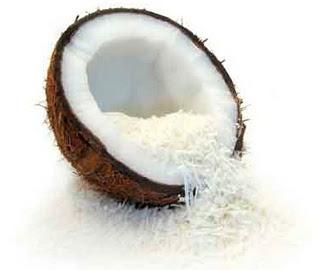
The wonderful center of the coconut
For a couple of dollars dropped into his tip jar (a dry half coconutshell of course), he gave us a de-husked coconut for the road. I got evenhappier, put it in my girlfriend’s backpack, and planned to crack it open backat the hotel. Flash forward a few hours and there I stood in our hotel roomwith the coconut in hand, no machete, no knife, no sharp rocks. How was I goingto get into this thing? Did I approach the nearest hotel bar, where surely thestaff would have been happy to open the coconut for me, like they customarilydid for other guests? No, that would have been simple and logical. Instead seeingnothing useful in the room, I went out to the balcony searching for some other(much less efficient) method. I thought the sharp corner where the hotel façademet our balcony might work. So under the bemused watch of my girlfriend, Ihammered the side of the coconut on the balcony corner with hard attention-attractingbangs – to no effect. If I kept this up I risked getting yelled at by someone,so I decided to give myself one more blow, a particularly forceful strikeaccompanied by a loud bang. To my pleased amazement a small facture appearedtwo-thirds up the surface. I grabbed a spoon which was in the room for somereason, and wedged the handle into the crack, twisted and levered the coconutopen. A small section broke off. Success! We drank the water, but the hardshell still kept the meat from us, but by now I wasn’t going to be deterred. Myimprovisation skills in full flight, I put the rest of the coconut in a plasticbag and jumped on it a few times. My weight crushed the hollow shell and I wasable to easily separate the broken shell bits from the meat. We gobbled the entirecoconut and we were sated.On our last day at the suggestion of Dahlia, the bar tender, we pickeda fresh green coconut from a tree next to the adult pool. She cut open the topand let us drink. The fresh coconut water was plentiful but the taste was sourand unpleasant, unripe. I’ll stick with the hard mature coconuts, no matter howdifficult they are to get into [11].
Impressions
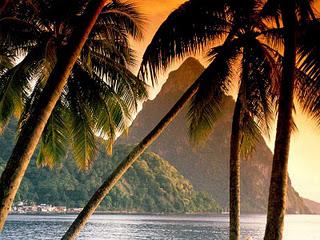
In the tropics, unchanging heat and light still time. Change is slow; natureis a beautiful backdrop and not an adversary. In the tropics there’s no push tomake life easier – it’s already easy. And so, as long as just enough touristdollars come in, as long as just enough produce is sold, as long as the peopleare housed and clothed, St. Lucia will go on, poor and only slowly evolving.
Does this ignore social and economic realities: geographic limitations,the lingering effects of British imperialism, the slow process towardseffective self-government, underdeveloped infrastructure, lack of foreigninvestment, and all the other forces that affect developing countries the worldover? Of course, a theory based on tropical climate has its limitations, but ithas a ring of truth. Ask yourself how you would react to perpetual 80-degreeweather, constant cooling breezes, and sunshine? How bad could the world be?How much would you want to change it?
Leaving
When we left we had to fight the massed crowd at Hewanorra. Despitethat fact that there are less than a dozen flights in and out each day, theyall land and take off within a couple of hours, which seems unnecessarily inefficient.There are eight departure “gates,” but that’s misleading because they are justeight separate doors, immediately adjacent to one another, that provide accessto the tarmac where you walk to your plane. So when two flights are boarding atonce, hundreds of passengers with luggage herd into a space big enough for onlydozens and slowly file out one at a time. It’s nerve-racking and just anotherpart of the universally unpleasant experience of commercial flying.
We took off just about on time, east over the Atlantic. Our planebanked north towards America. I caught a quick view of our resort before it disappearedbelow. A few minutes later I took one final glance straining back to see theisland over the plane’s port wing. I saw the Piton’s, backlit and gray in thelate afternoon sun. I saw the island get small and then the plane banked to leveland I saw only sky. I was back in the plane, back to nowhere, and St. Lucia wasgone.
---
NOTES:
[1] QueenElizabethII, who appears on the currency of all Commonwealth nations.
[2]There was a lobby bar, a swim-up pool bar, which doubled as the pool-side grillbar, a night club bar, the adults only bar by the adults only pool, and atleast one bar that was closed but appeared to be functional by the main stage.
[3]For instance, the night of our arrival was Western Night, and a country bandprovided the entertainment. We were seated fairly far the stage for dinner andat first I only listened. The music sounded so authentic that I though avisiting American was performing. But no, this was a local St. Lucian singingclassic country hits. It was at once disorienting and enjoyable.
[4]My first Cuban cigar, perfectly legal here in St. Lucia.
[5]I’ve quoted this line from Ulysses before, but in the moment I couldn’t thinkof a better way to describe this scene.
[6] Barelydiscernable far off the southwest coast through the afternoon haze.
[7] Notto be confused with what St. Lucians term sweet lemons, which are actually regular lemons, which ofcourse are sour.
[8]The U.S. probably built the airstrip as part of the “destroyers for bases” dealworked out with Britain before America’s entrance into the war. I suspect itwas used to by fighter planes to protect Allied merchant shipping and spot and attackGerman U-boats.
[9]And where I think the very last scene in the great movie Body Heat was filmed.
[10]But coconut palms are extremely sensitive to temperature and light, totallyintolerant of cold and darkness. If you see a healthy coconut palm outside, youmust be somewhere warm and sunny.
[11]An unopened coconut, purchased from my local grocery store, sits on my kitchencounter as I write. Ripe, de-husked coconuts can be shipped all over the world,so in Baltimore I can enjoy fresh coconut in the deep of winter.

